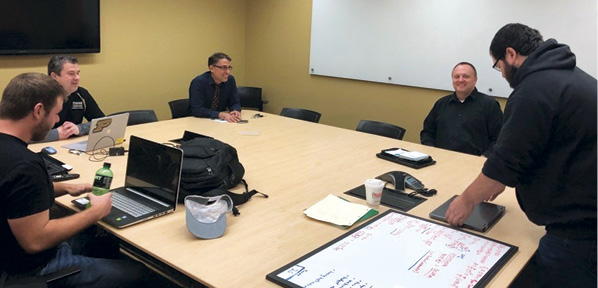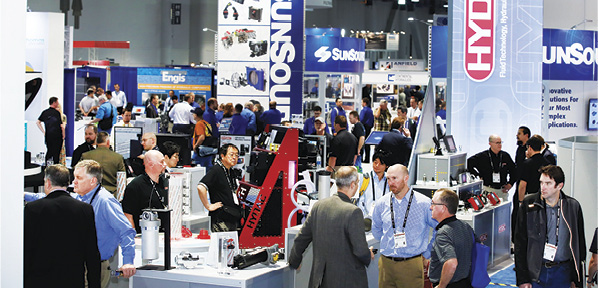NSF MME Workshop Helps Chart Course for Fluid Power Advanced Manufacturing Research
By Eric Lanke, NFPA President/CEO
Back in May I participated in a workshop on Fluid Power Advanced Manufacturing, hosted by the University of Minnesota and funded by the Manufacturing Machines and Equipment (MME) Division of the National Science Foundation (NSF). The objective of the workshop was to bring together experts from industry, academia, and national labs to identify the pre-competitive research objectives and approaches of integrating manufacturing innovations with model-based design and analysis for fluid power components and systems.
It’s a good thing NFPA and Center for Compact and Efficient Fluid Power (CCEFP) recently launched the Fluid Power Advanced Manufacturing Consortium (FPAMC), because it was helpful to have such a structure in place in order to help populate the NSF workshop with the experts and content they were looking for. Thirty people were in attendance, including manufacturing experts from NFPA/CCEFP members Caterpillar, Danfoss Power Solutions, Deltrol Fluid Products, HUSCO International, Muncie Power Products, Netshape Technologies, Simerics, and Steelhead Composites.
We heard presentations and interacted with a number of outside experts in several areas of manufacturing technology. They helped us understand the current state-of-the-art in additive manufacturing, powdered metal technology, composite materials, the use of lasers for thermal processing, metal cutting, coatings, metrology, and computational fluid dynamics. It was then our task to synthesize all that information, compare it to the manufacturing needs of the fluid power industry, and suggest several pre-competitive research areas that the NSF MME could invest in that would help advance our own state-of-the-art technology.
This last task we did in a series of breakout groups. The group I was in prioritized and proposed projects addressing our industry’s needs in five key areas:
Modeling/Tools
- Complete kit of modeling and simulation tools for energy consumption, productivity, etc.
- Models of fluid/tribology interfaces
- Models of fluid characteristics under pressure and vacuum
- Model of the manufacturing process for the generation of interfaces
- Better tools for flow optimization
- Training and tools for designing for hybrid manufacturing
Additive/Hybrid Manufacturing
- Material property tables for additive manufacturing
- Reduction of costs and expansion of additive material availability
- Improvement of additive manufacturing tolerance capabilities
Performance Improvement/Cost Reduction
- Proactive elimination of hazardous materials from the production process
- Reduction/combination of number of parts
- Use of coatings to target material properties where you need them
- Increase in power density by volume/weight through use of composite or higher strength materials
- Noise suppression/damping through modeling and materials
Quality
- New methods to determine and produce functional tolerances
- 100% traceability of components and subcomponents (non-contact measurement)
- Improvement of big data management and retrieval to improve process/reduce dependency on test/mitigate field warranty
Lead Time
- One-piece flow for finishing surfaces (eliminate batch processing)
- Increase in efficiency of assembly through automation and/or collaborative robots
If you could pick only one or two of these project ideas to see to fruition, which would you choose? A full report on the workshop outcomes is expected shortly, and I’ll be sure to share it with the entire NFPA membership for review and feedback. If we expect to see the NSF invest in any of these areas, we’re going to have to get much more specific on what can truly make a difference.






